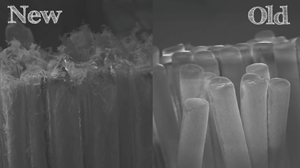Look for the ADA Seal—your assurance that the product has been objectively evaluated for safety and efficacy by an independent body of scientific experts, the ADA Council on Scientific Affairs. The ADA Seal Category section on ADA.org provides a list of manual and powered toothbrushes that currently have the ADA Seal of Acceptance. A manual or powered toothbrush earns the ADA Seal for toothbrushes when the manufacturer provides scientific evidence demonstrating safety and efficacy in the removal of plaque and reduction of gingivitis. Toothbrushes with the ADA Seal have had data reviewed by the ADA Council on Scientific Affairs and have met the recommendations for both manual and powered toothbrushes.
ANSI/ADA standards are used for testing the safety of manual16 toothbrushes. To qualify for the Seal of Acceptance, the manufacturer of a manual toothbrush must provide evidence that:
- All toothbrush components are safe for use in the mouth
- Bristles are free of sharp or jagged edges and endpoints
- Handle material demonstrates durability under normal use
- Bristles won’t fall out with normal use.
- The toothbrush can be used without supervision by the average adult to provide a significant decrease in mild gum disease and plaque
If a toothbrush differs significantly from previously accepted toothbrushes, the Council may request clinical studies to demonstrate that the toothbrush could be used without supervision by an average adult to achieve a significant decrease in mild gum disease and plaque over a 30-day period.
To earn the Seal, a powered toothbrush goes through tests based on the ANSI/ADA standards for testing powered toothbrushes.18 These tests evaluate qualities like electrical safety, tuft retention, mechanical strength and chemical resistance. The Seal program also requires powered toothbrushes to complete a clinical study demonstrating that they are safe for use on oral hard and soft tissues as well as restorations and that they meet the requirements of a safety laboratory such as Underwriters Laboratories, Inc.
